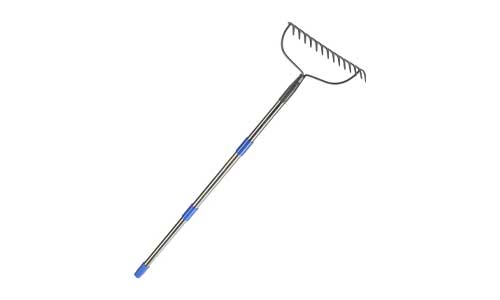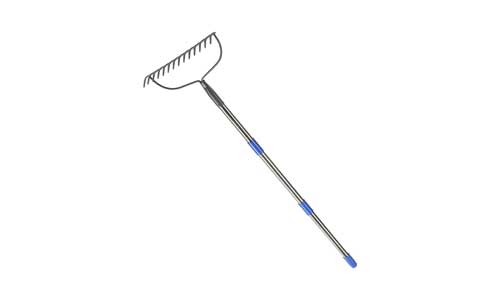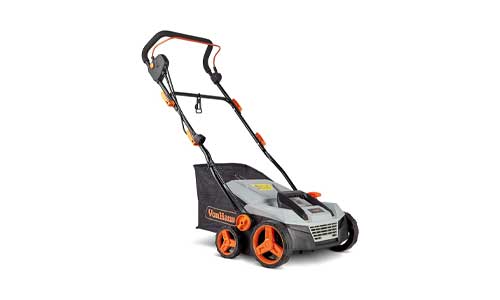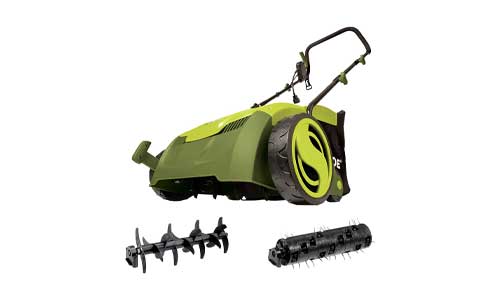Scarifier Vs Dethatcher – Difference Explained

Taking care of your yard is essential for owning a home, especially if you want to keep it looking good for those visiting your home. This mission means that you need to know everything about lawn care whether it is about taking care of soil health or remove debris from your lawn that is when tools like Aerator and Scarifier comes handy.
Not many homeowners can boast of their long lawn. Most of all, having a clean and well-manicured lawn adds strength to your pride. You will need a tool to remove debris and cuts regularly, and this is where you will meet the scarifier and dethatcher. Both tools are designed to clean your lawn, but which should you buy? In this article, we’ll see the difference between Scarifier vs Dethatcher, and after that, you can choose which tool is ideal for you.
Difference Between Scarifier and Dethatcher
Two differences between a scarifier and a dethatcher includes. The Scarifier has higher power than the Dethatcher on a lawn. It tears the grass surface while the detacher massages and generally press gently. The Scarifier is handy for tearing up thick patches, while the detacher is a gentler way to prepare your lawn for future growth.
What is a Scarifier for Lawns?
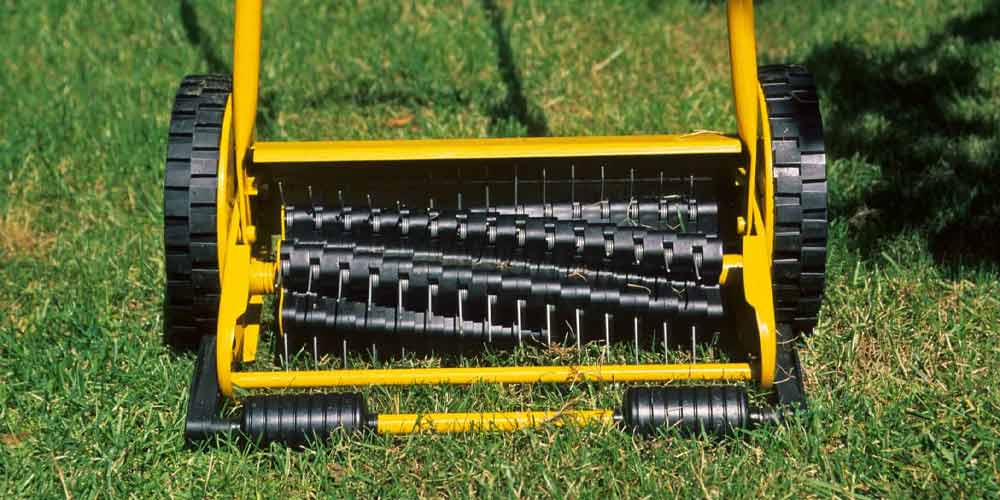
A scarifier is a gardening or lawn tool that can cut through roots and soil to infiltrate food, water, and pesticides. Scarifier has sharp metal blades that can cut grass to remove organic matter. The sweeper works to leave holes that allow fertilizer, water, and air to penetrate deep into the grass. It is similar to raking and helps loosen grass, moss, and other debris patches.
The Scarifier cuts the blade vertically and removes the material facing up. It’ll be easier to take out this way. Some units also have a collection bin to collect straws. This helps prevent scratching. The rotating cylinder digs in to tear out stubborn things.
Scarifier Characteristics
- Scarifiers have sharp blades, flail blades, or tines that penetrate deep into the soil to remove thatch, moss, and dead grass. The blades can be adjusted to control the depth of penetration.
- Scarifiers come with powerful electric or petrol motors that generate high torque to drive the blades. The power of the motor determines the efficiency of the scarifier.
- Scarifiers are excellent for aerating the soil, which allows air, water, and nutrients to reach the roots of the grass.
- Scarifiers are highly effective in removing thatch, which is the layer of dead grass, moss, and other organic matter that accumulates on top of the soil.
- Scarifiers can level the lawn by removing bumps and lumps, creating a smooth surface.
- Scarifiers can be used on different types of lawns, including large gardens, golf courses, sports fields, and parks.
- Scarifiers require regular maintenance to ensure they are in good working condition. The blades need to be sharpened, and the machine needs to be cleaned after use.
Applications of Scarifier
The scarifier tools’ application includes light or heavy milling, removing coatings (such as tile adhesive, rubber, or epoxy adhesives), grooving driveways and sidewalks to make them slip-resistant, and misaligned concrete floor joints and uneven surfaces.
What is a Dethatcher?

The only reason to use a Dethatcher is to eliminate the thatch barrier. It also helps pull that fabric to the surface. Different cultivators, such as motor cultivators, base cultivators, and traction models. Each of these patterns is a function of the size of the lawn. Sometimes there will also be an attachment of the tiller. Compared to scarifying, which is harsher, dethatching is delicate and shallow. It avoids digging into the earth by doing so.
Dethatching, which is done with a special hand rake, is an excellent way to manage the temperature. But, If you have a big lawn it is best to go for tow behind lawn sweepers rather than doing dethacthing manually with a rake because it will save your time and effort which is needed for big lawn dethaching.
Dethatcher Characteristics
- Dethatchers have blades made of flail or spring tines, designed to gently remove thatch from the surface of the lawn without damaging the grass.
- Dethatchers have electric or petrol motors that are less powerful than those used in scarifiers, but still generate enough power to drive the blades.
- Dethatchers are effective at removing light to moderate amounts of thatch from the surface of the lawn. They are best used on lawns that have a buildup of loose or dead grass.
- Dethatchers do not provide as much aeration as scarifiers, but they can still improve air and water circulation in the soil.
- Dethatchers can improve the overall health of the lawn by removing thatch, which can create a barrier that prevents nutrients, air, and water from reaching the roots of the grass.
Application of Dethatcher
Blades with metal spring attachments and blades with nylon trimmer line attachments are the two most popular types of dethatching blades used on lawn mowers. It may be used to remove light-to-moderate thatch from up to 4,000 square feet of lawns. The importance of proper operation cannot be overstated.
Comparison Between Scarifier and Dethatcher
| Aspect | Scarifiers | Dethatchers |
|---|---|---|
| Purpose | To remove thatch and aerate soil | To remove thatch without aerating soil |
| Blades | Have sharp, flail or tines blades | Have flail or spring tines blades |
| Depth of penetration | Penetrates deeper into soil | Penetrates less deep into soil |
| Type of thatch | Removes thicker and more stubborn thatch | Removes lighter and looser thatch |
| Motor power | Generally more powerful motors are used | Generally less powerful motors are used |
| Suitability | Suitable for heavy-duty and commercial use | Suitable for light-duty and residential use |
| Results | Results in a more even and level lawn | Results in a less even lawn, may require raking |
| Maintenance | Requires more maintenance and upkeep | Requires less maintenance and |
Scarifying vs Dethatching
What is Scarifying?
Most scarifying lawn mowers use steel blades on a shaft that rotate under the power of the machine to remove moss, grass clippings, and other grass debris from your lawn. The blade cuts lengthwise into the ground and hooks onto a tree stump on its way out, throwing material upwards for removal. Some scarifying machines offer a handy collection bin that automatically picks up any piles of trash, so you don’t have to rake your lawn. The blades of a whitewasher go deeper into the soil than a tiller, which is useful when removing very thick layers of straw.
Most likely, your lawn is made up of fescue grass, which is infamous for fast accumulating unpleasant thatch layers. This problem of the thatch layer may be managed by using a scarifier. Many scarifying machines feature adjustable blade heights, allowing you to go deeper (deeper) or shallower (shallower) based on your lawn’s demands. This function increases the Scarifier’s versatility for other lawn care tasks.
When to Scarify Your Lawn?
Scarifying is the best method for removing undesirable thatch from all lawns. When thatch accumulates and compacts, it obstructs air, water, and nutrient exchange, resulting in poor soil quality and deterioration of your lawn. After the active grass growth season begins, scarifiers are most effective. Grass growth usually occurs in the spring, but it might also occur in the fall, depending on the grass species. To start scarifying, make a single pass with the blades set higher in one direction. Make a second pass in the other direction, this time with a lower blade setting.
Pass through on an angle similar to the prior two, lowering the blades once more. You can alternate raising and lowering the blades until the thatch is clean, depending on the severity of the thatch problem.
Scarifying at home should be done once a year, but you may conduct a second run if the yard gets choked up with thatch again at the end of the growing season. Before employing a scarifier, mow your lawn to limit the quantity of grass the machine has to cut through. Using a scarifier is an excellent technique to free up the topsoil and allow new grass seeds to penetrate more easily, taking root more quickly.
Pros And Cons of Scarifying Lawn
Pros
- To remove more embedded trash, metal blades penetrate deeper into the soil.
- Additionally, it aids in the loosening of surface soil for improved air and water absorption.
- When it comes to planting seeds, this method is quite effective.
- The chopping movement helps to prevent the growth of moss and Viney weeds.
- It prevents the lawn from becoming soggy.
- Pruning some grass blades increases sideways branch development, which results in a thicker lawn.
Cons
- Until the new growth fills in, the lawn may appear rough.
- Overuse can harm your grass by ripping the root system apart.
- Depending on how much the grass has been neglected, you may need to make numerous passes with different blade heights to remove the thatch completely.
My Top Scarifiers Picks
What is Dethatching?
Dethatching is another approach to getting rid of thatch in your yard, but it’s only a surface action that doesn’t get deep into the soil. A little coating of thatch is useful to your lawn because it helps regulate soil temperature and moisture levels, but a heavy covering may hurt your grass. Mold and illnesses grow under a deep thatch layer, which inhibits air, water, and nutrients from reaching your lawn.
When to Dethatch Your lawn?
The season in which you should dethatch your yard is determined by the sort of grass you have. Some grasses, such as Zoysia or Bermudagrass, bloom in the spring, while others, such as Kentucky bluegrass, bloom in the fall. Always keep an eye out for robust new growth in your yard since this indicates that it’s time to dethatch the lawn. An actively growing lawn will recover from dethatching considerably more quickly and seem greener and healthier for the remainder of the year.
Making a pass in a North/South direction, then the second pass in an East/West direction is the ideal method for dethatching. If you’re using a hand rake, mow your grass beforehand to make access to the turf’s base easier. Dethatching established lawns at least once a year or when the thatch layer reaches 1/2-inch thickness is a smart gardening practice.
Pros And Cons of Dethatching Lawn
Pros
- Allows water, fertilizers, nutrients, herbicides, and air to access the soil.
- If required, do it more than once a year.
- Mower blades will be able to cut the grass at the right height.
- Once your grass has recovered, it will appear greener and lusher.
- Mildew, mold, fungus, and mosses are less likely to grow on the surface.
Cons
- To avoid irreversible damage to your lawn, detaching must be done appropriately.
- It takes a lot of effort to dethatch using a rake manually.
- It will not penetrate far enough into the soil to loosen or aerate it.
My Top Dethatcher Picks
Conclusion
Dethatching is a fantastic way to give your lawn a new lease of life. The Scarifier and the Dethatcher are two instruments you can utilize to complete this task. Even though they may appear to be the same, they aren’t. The Scarifier differs from the Dethatcher primarily in terms of intensity and application. One pulls thatch from your grass with furious vigor, restoring vitality to your plants.



